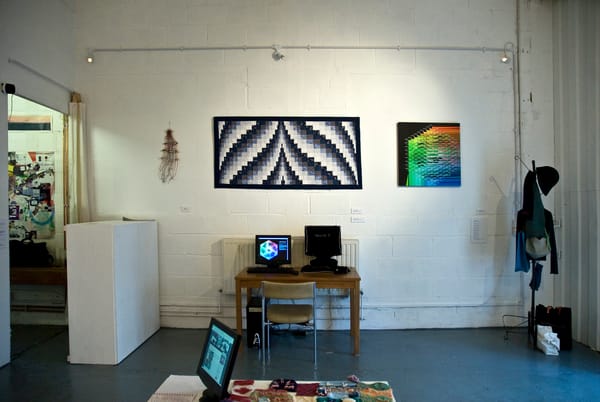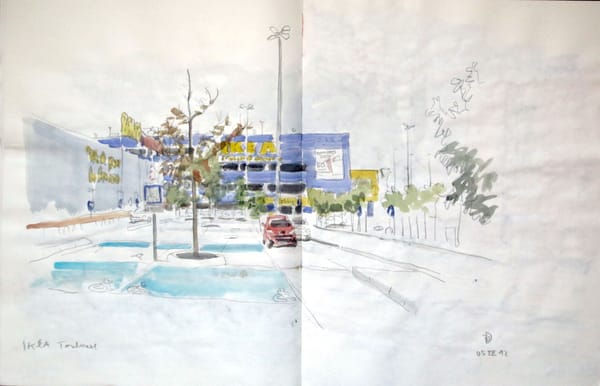Becoming a Field Catalyst for Community Innovation
From user to community innovation / Auto-emojis / OS Adoption Index

It’s been a while since I last wrote – actual cat-herding at work got in the way, you might say, along with some newly acquired hobbies (kayaking! 🛶) But I’ve been meaning to put some thoughts down about community innovation for a while now. And here I am, finally on holiday, in the Bavarian countryside, surrounded by fields, cows, tractors, and more sky than Wi-Fi. As it turns out, fields are a pretty good place to think about community innovation – the kind of innovation that starts with a quick fix, maybe involving clever cows, or a friendly neighbour who’s already figured something out.
In the 1970s, Eric von Hippel, a professor at the MIT Sloan School of Management, began studying how innovation happens, not in theory, but in practice: on factory floors, in workshops and garages. What he found ran against the grain of standard economic thinking at the time. In many industries, he found, the most useful innovations weren’t coming from manufacturers but from users. People were modifying products not (only) because they wanted to tinker, but because they needed something that didn’t yet exist. Von Hippel wrote:
Our key finding was that approximately 80% of the innovations judged by users to offer them a significant increment in functional utility were in fact invented, prototyped and first field-tested by users of the instrument rather than by an instrument manufacturer.
Some users, according to von Hippel, were further ahead than others, already solving problems other people might face in the future. Von Hippel called them “lead users.” This observation became the basis for the “Lead User Method” in business management: a structured way for companies to identify these users early and bring their ideas into the product development process. Von Hippel’s research suggested that to innovate, companies should pay close attention to users solving their own problems.
By 2005, von Hippel had gathered his research into Democratizing Innovation, where he elaborated on the idea of an “innovation community”, an organised cooperation around developing and spreading user-driven innovations. Both users and manufacturers could be part of these communities. While focused on exchanging knowledge, von Hippel also noted that these groups could serve as social spaces, offering support, a sense of belonging and shared identity, online or offline.
From innovation community to community innovation
In the early 2000s, a group of volunteers in the Dutch city of Leiden started building a community Wi-Fi network: Wireless Leiden. At first, the work needed was mostly technical, but as the network expanded, so did the scope of the project, including administrative and organisational work, PR and judicial matters – the innovation wasn’t just in the technology but in the way people organised around it. Therefore, researchers at the University of Twente – Ellen van Oost, Stefan Verhaegh and Nelly Oudshoorn – building on von Hippels research, suggested to call Wireless Leiden a case of community innovation:
[We] want to propose the concept of community innovation as a way to conceptualize the type of user-initiated innovations whereby the community itself is an essential element of the innovation.
Wireless Leiden offers a useful counterpoint to the way “user innovation” is usually framed – in the tradition of Eric von Hippel’s Lead User Method – where companies profit from the ingenuity of advanced users. In Leiden, there was no company waiting to scoop up ideas. As someone working in partner and ecosystem management, I often wonder: how can organisations support community innovation in ways that feel empowering rather than extractive? I’ve recently come across a concept developed by the NGO world that seems helpful here: the „field catalyst“ organisation. Such field catalyst organisations support the conditions under which community innovation happens:
1. Understanding the field and connecting the dots
Field catalyst organisations start by trying to understand an ecosystem and its actors. They pay attention to what’s already happening and ask where things might be stuck. This means talking to people, following threads across different sectors, and noticing gaps, e.g. by mapping the ecosystem. The aim is not to lead with a solution but to make sense of a complex, moving system.
2. Strengthening local work
Once they have a sense of the field, field catalysts look for ways to support those already doing the work, e.g. by offering funding or technical help, or just connecting people with similar challenges in order to make their efforts stronger and less isolated.
3. Making work visible and easier to share
Local innovation is often specific and informal, which makes it easy to overlook. Field catalysts help surface that work, and try to make it easier to understand and share with others. They track what’s working and translate specific lessons learned in ways others can pick up and use elsewhere.
4. Linking local action to wider change
Field catalysts also help connect local insights to broader systems. They draw attention to recurring problems, highlight working alternatives, and bring actors together across different levels. Over time, this can create possibilities – and pressure – for structural change.
Here in the Bavarian fields, the idea of a “field catalyst” feels like a fitting job description for anyone working in ecosystem and partner roles: the real task isn’t about taking the lead, but about noticing what’s already happening and figuring out how to make it easier for others to do their work. If organisations want to support community innovation, they could do worse than start in the Bavarian Almen, I’d say – with a few good questions and the patience to walk the field (while watching out for resourceful cows).
The Toybox
This edition’s Toybox pick is one of those tools you didn’t realise you needed until you try it: Espanso, an open-source text expander that runs in the background and replaces custom keywords with snippets, whether that’s boilerplate text, links, or (in my case) emojis. I used to copy-paste emojis from websites or emoji panels but can now add them via shortcuts, yay.
If you’ve come across a fun open-source project (or built one!), feel free to reach out at theartofherdingcats [at] proton.me – I’d love to feature it in a future Toybox.
Treats
Public voting is now open for the German Open Source Competition, a good opportunity to support OS projects and discover some lesser-known gems. Meanwhile, as recently shared at OS Summit Europe, an Open Source Adoption Index is in the works, led by the UN and partners, to track how open source is being used – no resources here to share just yet, but I think it’s a promising effort to surface both gaps and momentum in OS adoption worldwide.





